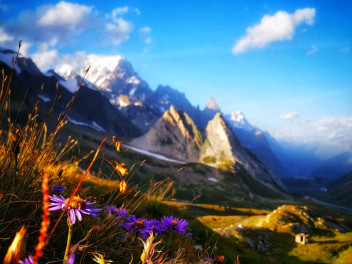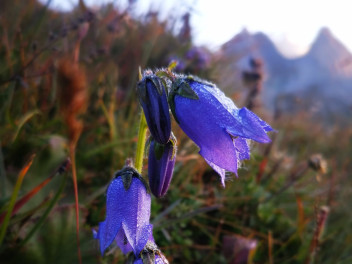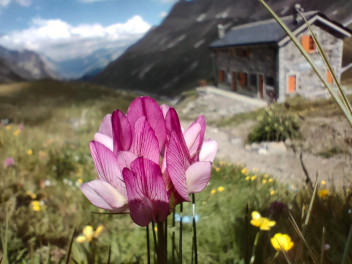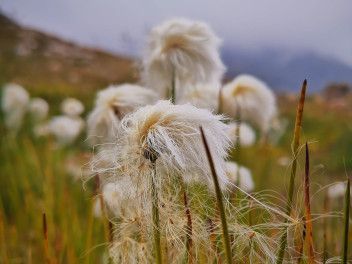The flora
The Mont Blanc massif, where acid soil dominates and which has steeps slopes made smooth by glaciers, is a rather poor area in terms of flora. The surroundings are richer and more interesting because often the soil is created by calcschist or calcareous rocks and the living conditions for plants, even though characteristic for a rigorous mountain environment, are less extreme.
Even if in a different measure, the contrast in the types of soil having different origins is visible on all faces. In the majority of cases, the species that can be found during an excursion in France are the same as those that can be admired in Switzerland or Italy, with some important exceptions: the Gentian, for example, present on the Swiss and French sides of the Alps, is not signalled in Valle d'Aosta.
The levels where vegetation in the Mont Blanc Space is most present are: the subalpine level, where the conifer forest populated above all by spruce and larch prevails; the alpine level, characterised by the meadowland which, going upwards, thins to become pioneer clods; the nival level above the perennial snow.
The subforest of the subalpine level hosts numerous species. Among the most visible are the rare and beautiful Slipper Orchid, the Martagon Lily and the Aquilegia Alpina.
Passing into an area where shrubs such as Rhododendron and Myrtle abound, the subalpine level moves upwards towards the alpine level. The alpine meadowland is populated by many species with spectacular flowering, among which the two vicarious Gentiana acaule and Gentiana Clusii, the famous Edelweiss and the rare Campanulathyrsoides.
Among the rare plants that can be found in the nival level, the two that hold the record for height in the alpine arch are Ranunculus Glacialis and Saxifraga with two flowers.
The three countries have a common legislation that protects species, both flaura and fauna, according to their vulnerability. Mont Blanc Space, together with the work group on sensitive environments, tries to identify local coordinated protection measures for the three sides of the massif.
It is also possible to have an idea of the Mont Blanc Space flora by visiting one of the alpine parks present in the three countries. Even though it cannot replace the emotion of an excursion into nature, visiting an alpine park can be very useful because the plants are classified and therefore easily identifiable.



